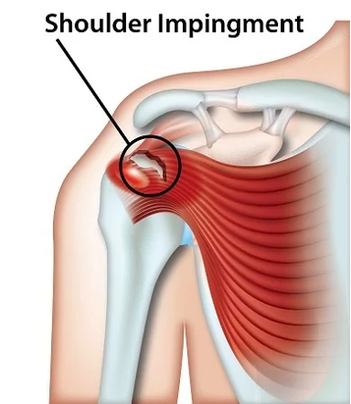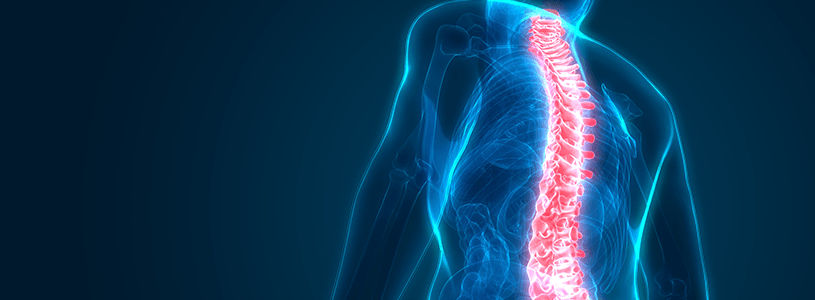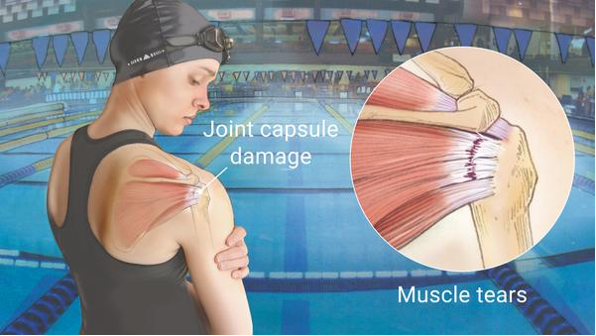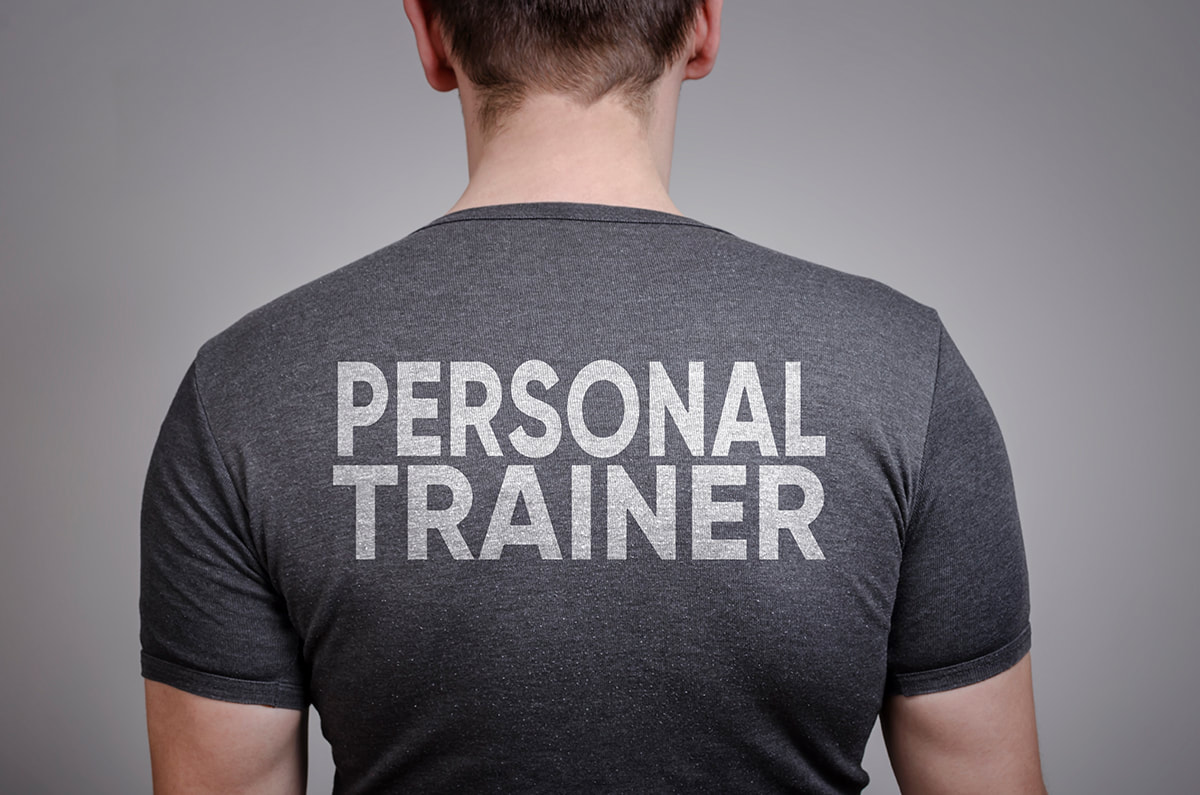|
By: Benjamin Cole
Perhaps the biggest phrase the fitness industry next to "what'd you hit yesterday?" is "form fits function." This phrase expands beyond fitness but finds a good home here in that our bodies fit the function we need them to, for better or worse. In this week's Evolve Blog, we're going to talk about ergonomics and morphology, the underlying sciences of the "form fits function" mantra in the fitness industry. Ergonomics = Environment The study of ergonomics is crafting our tools, equipment, and environment to better suit the human body and our productivity. Wikipedia states that ergonomics is a combination of numerous disciplines, ranging from engineering and biomechanics to psychology, physiology, and UX design. Something that is 'ergonomic' is intended to fit your function. A quick Amazon search of 'ergonomics' will provide you with well over 100,000 different tools and equipment, from chairs and desks to mice, footrests, neck pillows, keyboards and more. If you want to work comfortably and productively, you have to do so in an environment that's conducive to those goals. If you're writing your thesis or working from your computer there's a good chance you'd rather do that in a comfortable chair in an office with good wifi and a cup up a coffee (or two) versus a concrete floor with no support. In ergonomics, you are crafting your environment and equipment to suit your function, with you being the fit. Morphology = Form of Organism According to the Encyclopedia Brittanica, morphology is "the study of the size, shape, and structure of animals, plants, and microorganisms and of the relationships of their constituent parts." Said another way, morphology is the study of how an organism is structured in relation to what it needs to do by looking at what makes it up and how it "is." If ergonomics is matching function to fit, morphology is analyzing fit to function. Quite simply, the human body's morphology has been designed over millennia by Mother Nature to be active, move often and stand more than sit. Modern society has forced us to sit down for our work, our commutes, our entertainment, and our gatherings. Some health experts are even saying sitting is the new smoking. This recent Evolve Blog dives deep on that and spine health. Basically, our modern world and way of life is opposite to how Mother Nature designed us to function. Human Being's morphology indicates that we are meant to move, stand, and run regularly, not sit 10x more than any of those. A lot of us don't have a choice; our work demands of us that we "sit down and get to work." How can we make the work fit our morphology? You might have seen the relatively recent craze for standing desks and even treadmill desks that are pushing the limit on how we work. This is a great example of abiding by our morphology by using ergonomics to match our function to our fit. Mindful of Morphology The point of this article in a large sense is to bring awareness to how the human body was designed by nature and how our modern work environment is at odds with that. Trainers and PTs all across the world deal with their client's postural distortions through corrective exercise and remediating their everyday positions that lead to their conditions. Upper and lower crossed syndrome and kyphosis and lordosis; all-too-common posture dysfunctions caused from excess sitting and poor posture. So be mindful of your morphology. You don't have to buy a treadmill desk, but buying a more comfortable chair, walking every 45-60 minutes, and taking the stairs are all easy ways to be in accord with how the human body was designed to function. What is your function and how can you either improve your function to your fit or your fit to your function? Form Fits Function Now you likely have a good idea of what this phrase means. Your form, how you are, is the perfect fit to your function. If you have an arched back, forward shoulders and protruded cervical spine (forward head posture) there's a good chance you sit more than stand in a day and don't do any corrective exercise to combat this everyday positioning. Your form fits your daily function. On the flip side of this, you can imagine how an athlete's program is designed. What function is the athletes body or mind needing to form to? What a defensive lineman needs is going to be vastly different from what the quarter back or wide receiver needs; their functions are different mentally and physically but their form fits their function individually. Trainers and PTs work to create the environment and fit for their clients function, be it reverse engineering how it's given them pain or how they can excel in game. Deliberate Program Design On a final note, trainers and PTs often look at what your day-to-day is like so they can combat what might be causing your pain or keeping you from your goals. In a way, we reverse engineer your lifestyle, showing you how your fit is matching your function, and we design programs that help you "fit better." If there's ever a good reason to hire a PT, it's to have another set of eyes see what's your function, how you function, and how you can be more fit to lessen any pain or struggle you might have. -- Ideally, this short piece gave you a new lens to view how you function, what "form fits function" means, and what trainers and PTs are doing when they ask you all these questions about how you do your life.
0 Comments
 By: Mike Staszak Shoulder impingement is the pinching of one of your rotator cuff tendons (most commonly supraspinatus) against a bone called the acromion process when certain movements are performed such as reaching overhead and behind the back. In a normal, healthy shoulder the supraspinatus tendon has plenty of room to move freely without getting pinched when you perform shoulder motions and activities. In rare occasions some people have a congenitally larger acromion process which causes a higher likelihood for shoulder impingement. In most cases, however, shoulder impingement is brought on over time by poor shoulder mechanics and posture, weak shoulder stabilizer muscles, and muscle tightness around the shoulder. What can be done to improve shoulder impingement? The first step to correcting shoulder impingement is improving one's posture. Forward shoulder posture puts the shoulder in more of an impingement position by narrowing the joint space where the rotator cuff tendon is, thus increasing the likelihood for it to get pinched on the acromion process with certain shoulder movements. Next, we need to work on loosening up all of the tight soft tissue around the shoulder; the pectorals, upper trapezius, lat, and the posterior rotator cuff muscles that pull the shoulder forward into an impingement position if they aren’t flexible. This can be achieved both with manual therapy applied by a physical therapist and by the person stretching the tight muscles around their shoulder. Corrective Exercises > The last piece involves shoulder blade and rotator cuff muscle strengthening, but it's critical to do this with your shoulder in the correct position. This is not as easy as it sounds; there are many small muscles that must work together in a coordinated manner to move the shoulder joint without pinching any of the tendons running through the joint space. The specificity in which you do these exercises is critical; if you're not doing them correctly it can actually compound the problem. No pain, no gain is not an adage to work by when addressing shoulder impingement. -- The best plan if you have shoulder or upper arm pain is to see a physical therapist for help. Sometimes trying to work it out on your own can make the problem worse. About Mike Staszak Michael Staszak has been an outpatient orthopedic physical therapist for the past 27 years. He is the owner of Staszak Physical Therapy & Wellness Center in Eugene. He and his staff believe that the more people understand how their bodies work and learn proper body mechanics, the less likely they are to become injured again. With this commitment to patient education, Michael provides wellness articles and presentations for businesses and community members. Photos from SportNova UK, MayoClinic If you've made the choice to pursue your fitness goals, it can be incredibly helpful to have someone who can help you reach them. This is where a personal trainer comes in. Not only does having the support of a personal trainer keep you more motivated and accountable when it comes to your workouts, but he or she can also play a role in helping you maximize your time at the gym, prevent injury, and see more consistent results.
But how do you know how to choose the right person who will help you set the correct goals to achieve your desired results? Each trainer has their own style and approach to training. Therefore, it's crucial to do your due diligence as you go about choosing a trainer; all it takes is a little legwork to determine whether or not someone will be a good fit for your needs. After all, it's called "personal" training for a reason. Working closely together creates a bond that will help you to stay engaged and motivated throughout the process. To help you with selecting the best personal trainer for your needs, take into consideration the following criteria: Credentials A trainer should be able to show you a fitness certification in their particular area of expertise. To become certified, personal trainers must pass an exam through accredited organizations such as The American Council on Exercise (ACE), the National Academy of Sports Medicine (NASM) or the National Strength and Conditioning Association (NSCA), etc. This ensures they've met certain standards of professionalism and competence from a trustworthy organization. Experience A trainer who has been working with individuals over time has likely tested and perfected his or her process for providing the best cues to help you get the most out of every workout. Newer trainers can be wonderful, but there is also a higher risk that you'll be their guinea pig as they fine-tune their coaching style and methods. Personality What motivates you? Some people do well with positive reinforcement and lots of cheerleading, while others like a more forceful, no-nonsense approach and scared into pushing further. Either way, talk to the trainer and get a feel for his or her style to see if it connects with what works for you. Philosophy This is a subtle, yet critical, point of differentiation because it can end up making or breaking your experience. How does the trainer develop his or her program, and on what beliefs will it be based? Are they tied to gym-based workouts or will your workouts be outside? Will you be using machines or sticking solely to free weights or other tools? Ask them about their philosophy and make sure it aligns with your goals and preferences. Specialties If you're looking to reach a very specific goal, for example, improving your running times or burst of speed on the field, you will want someone familiar with the nuances of your sport. Not only will he or she have more expertise in your desired area, but chances are they will be more passionate about it, as well. Cost Just as experience, personality, and philosophy can range vastly between trainers so can their hourly rate, depending on certifications, specialty and location (sometimes as much as hundreds of dollars). So before you begin your search, think about your budget. If hourly solo sessions are currently beyond your means, some trainers offer semi-private sessions or their gym might offer a discount for buying a multiple-session training package. Availability Because consistency is key when working with a trainer, it's a good idea to ask about his or her schedule. How many clients do they have and are they booked solid all of the time? Do they like to book them at the same time each week, or will your appointments be at different times? How far in advance will you need to book appointments? What is their cancellation policy? Location Are you willing to drive across town, or do you need a training option within walking distance in order to stay motivated? And where do you like to train? Some people get inspired by seeing others in a traditional gym setting, others like the one-on-one approach of a fitness studio, and still others prefer to work out in the privacy of their own home. Be sure to ask what your options are with potential trainers. These guidelines can help you in selecting the right trainer for your needs but not all of these might be important to you. Either way, it's about listening to yourself and making sure you find a trainer you feel matches well with your style and your goals. At Evolve Fitness Studios, we are conveniently located in downtown Eugene and feature some of the area's best personal trainers. Each has their own area of expertise and style so chances are we have a trainer who can meet your needs. We also offer personal training 3-packs so you can get to know a trainer and see if he or she is right for you. Give us a call today to schedule a tour and meet our staff. 541-844-1295. See you soon! |
Evolve Fitness StudiosCheck out posts from our trainers, healthy recipes, and tips for staying motivated and more! Categories
All
|




 RSS Feed
RSS Feed
